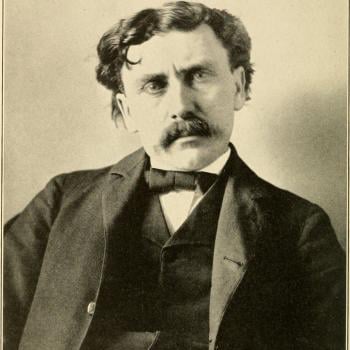Zachary (Zac) Wingerd is a colleague of mine in the History Department at Baylor University. He recently asked me to endorse the book that he has written with Brad Hoff entitled Syria Crucified: Stories of Modern Martyrdom in an Ancient Christian Land (Ancient Faith Publishing, which is due out next month). I happily agreed to do so, and the more I read, the more impressed I was, and the more enthusiastic I am about getting the word out to a larger audience.
Here is the authors’ description of the book:
Currently, Syria’s Christians are under continued threat of eradication from their homeland as prior years of coming under direct attack from jihadist invaders has more recently turned to a slow-grinding economic war of strangulation through far-reaching U.S.-led sanctions targeting the Assad government and in turn the whole population. And yet Syrian Christian sufferings have been generally met with apathy and misunderstanding in the West, often driven by ignorance coupled with false assumptions about the crisis perpetuated by the media. Syria Crucified is an engaging compilation of personal stories representing Orthodox Christian experiences, including eyewitness accounts of martyrdom, deepening prayer and closeness to Christ amid hardships, as well as lives of Syrians who are modern “living confessors” of the faith through their sufferings and patient endurance.
I am fighting the temptation to quote most of the book in this blog, but let me offer some represetative quotations and excerpts:
From Chapter One
The Convent of Mar Thekla, on the other hand, was home to over fifty nuns and orphan girls. Throughout the al-Qaeda invasion and the brief battle that ensued, the nuns and the children took shelter in a cave connected to the convent on the side of the mountain into which the monastery structure is built. Rouba described the main reason the nuns and orphans feared for their lives in that moment: “To them, we’re pagans,” she said, referring to the foreign invaders. The nuns and orphans survived and escaped, while reports indicated a dozen or more of the town’s Christians were killed and others kidnapped.
In the week following, solemn funerals were held at churches in Damascus, and for the first time since the war began, photographs of Syrian Christian families saying goodbye to their martyrs made front pages of some newspapers in the United States. Coffins of the deceased were draped in Syrian national flags with a large gold liturgical cross placed over each.
From Chapter Three
In a scene that it is easy to imagine playing out on the very same spot in New Testament times, the Aramaic-speaking bishops prayed for the charism of the presbytery (or priesthood) to descend on Fr. Bashar. As the lengthy service neared its completion, he stood newly elevated to the ministry, thick clouds of incense lingering above the heads of the many congregants. The solemn moment was suddenly shattered when an explosion pierced the peaceful atmosphere, shaking the church’s thick marble and concrete walls.
“There was bombing right beside the church,” Fr. Bashar said somberly. The clergy, not thinking of themselves, rushed to help the guests and visitors escape, especially “because there were people from America there,” who were certainly the most panicked. “So right after the prayer end, everybody had to leave quickly and go where they came from. If they came from Saidnaya, go back to Saidnaya. If they came from somewhere in Damascus, go quickly to their homes. Yeah, it was very hard day. There was a lot of people have been killed outside of the church. So we just had to get out.”
Tragically, Bab Touma and the surrounding dense Christian residential areas would continue to be under monthly and sometimes weekly attacks for multiple years. One news headline from April 2014 reported, “In Damascus, Christians briefly ignore war for Easter.”
From Chapter Five:
As their priest, Fr. Ibrahim did not hesitate. He went to the execution site, prepared their bodies for burial, and prayed the funeral lamentations for the departed. That night the jihadists confronted him at St. Mary Church:
“Then they came to the church about seven-thirty in the evening. They wanted to destroy it, they broke the two crosses outside of the church and then they came in to rob the church, but I didn’t let them.”
He then detailed a scene that sounded like something from the eighth-century iconoclastic movement.
“They were going to take the icons from the church, but I told them, ‘You can’t take the icons from the church.’
Then they said, ‘Well, we’re going to take you to the court!’
I replied, ‘I will go with you, that’s no problem, but I won’t let you take anything from the church.’ They said, ‘We will take you then,” so then I said, ‘Fine, take me.’
I quote another description of the book by Melinda Johnson:
The book includes accounts and stories which have never before been revealed – harrowing episodes of young Christians dodging bullets on their way to school, monks and nuns huddling in prayer as fanatical armed insurgents surround their monasteries, priests and bishops heroically traveling the war-torn countryside to ransom their parishioners, and details of the plight of the last Christians of Idlib and the unbelievable journey of their kidnapped priest, Fr. Ibrahim.
Here is my enthusiastic endorsement :
Syria Crucified is a deeply moving book, which is at the same time an extraordinarily valuable document for understanding an area that was long so vitally important to Christian history. Even if we read all the many works of analytical scholarship about religion and conflict in the contemporary Middle East, they are still no substitute for the first hand accounts that we find in this really enlightening and often harrowing piece of oral history. Syria Crucified gives us the voices of the ordinary people themselves, in all their courage and hope and sadness. I cannot recommend this book too highly.














